A guide to the migration
Share this Article
Scroll Down
By Warren Pearson
The wildebeest migration has to be one of nature’s true wonders and one of the greatest wildlife shows on earth.
Two and a half million animals playing out their lives across the Serengeti-Mara ecosystem. They are watched and followed by every predator that inhabits this vast East African grassland.
So what is the best time and where is the best place to watch this, “the greatest show on earth”?
Let us first disregard any beautifully laid out map depicting the movement of animals in an annual circle. Unfortunately, nature does not work in this manner. The migration pattern is entirely determined by the amount of grazing on the plains and the amount of rain. If the wildebeest had a choice, they would probably stay in the southern Serengeti’s short grass plains, around the Naabi Hill gate and Lake Ndutu area, where they calve (December to March) and there is an abundance of rich nutritious grass to support them. Hundreds of thousands of calves will be born in a very short period of time. Predator activity is, as one would expect, quite dramatic at this time. However, water and grazing would not sustain their numbers all year.
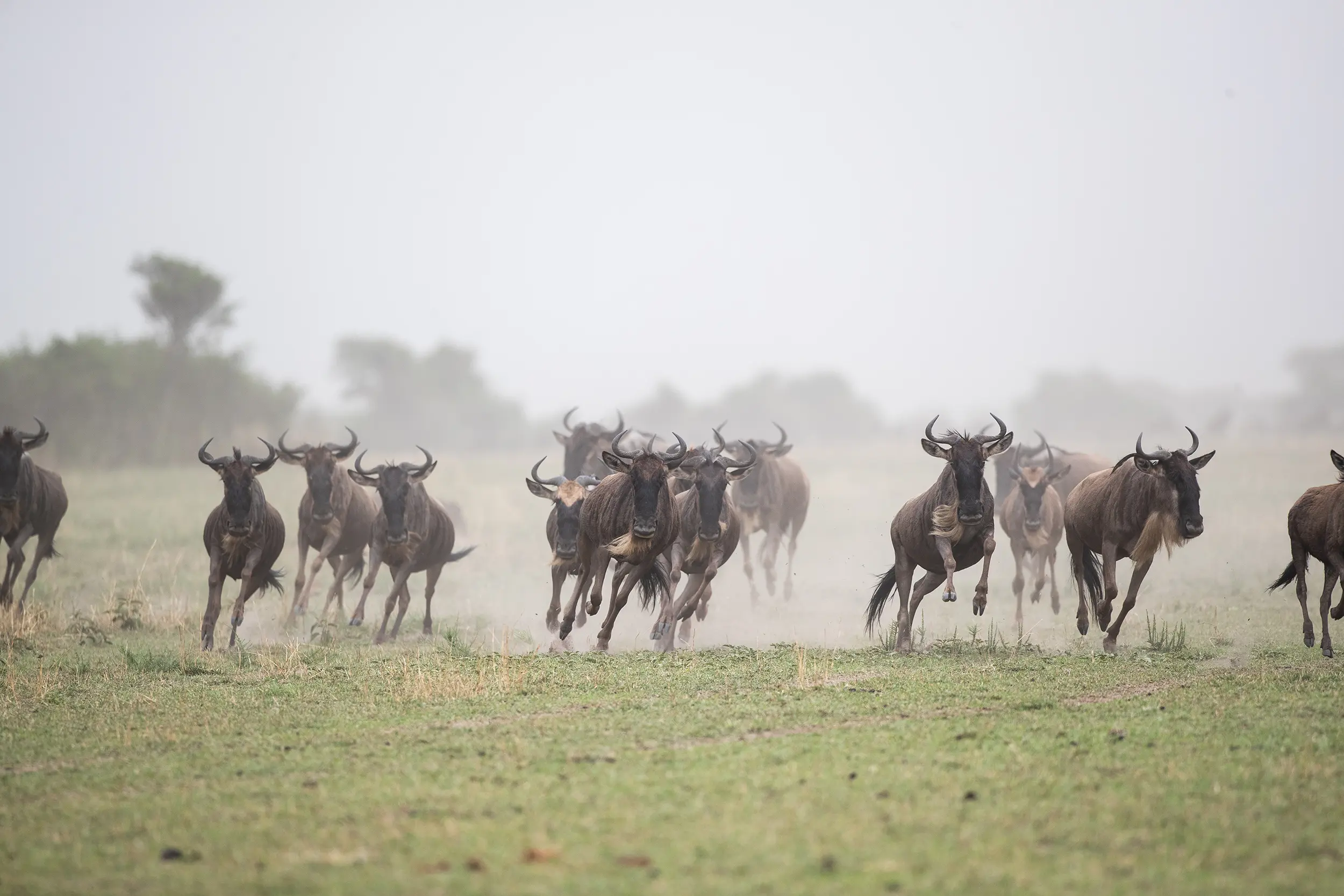
The migration will then depart in search of better grazing, leaving the southern Serengeti as late as possible and returning as soon as possible.
As a result, every day, week and year may be unique. The migration also does not occur in a straight line, as depicted on the maps. They proceed, but it begins to rain behind them, so they turn around, first to the east, then to the west. They sometimes split up, then rejoin, they walk in a line, then they spread out. You will never be able to predict where they will be with certainty. The best you can do is look at previous years, but even that cannot guarantee where they will be.
The rains should stop by the end of May, and the migration should begin to move north and west, where there is better grazing and more water; this usually happens as the plains of the south and east dry out.
Not all of the animals take the same path.
Some will travel through the western corridor and the Grumeti river before heading north, while others will travel through the central Serengeti and up through the Loliondo area on the eastern side of the Serengeti. If it’s a dry year, the migration could arrive in early July at the Mara River (the only decent permanent water available). If the year is wet, by mid-August.
If the conditions are ideal, with plenty of grazing and water, the migration could extend all the way from Seronera in the central Serengeti to the Maasai Mara.
The continuous to and fro crossing of the Mara river, between the Serengeti and the Maasai Mara, is ongoing until around October/November, when they begin to consider returning to the southern Serengeti’s short grass plains. Again, everything is subject to the weather. During this time of year, river crossings can occur at any time. They’re elusive and fast, but if you’re in the right place at the right time, they’re an unforgettable experience.
Patience is required because wildebeest and zebras are easily startled.
Your patience may result in seeing only a dust cloud as they flee in the opposite direction, or it may result in a crossing where you will witness the chaos as wildebeest, zebra and the occasional gazelle struggle to cross, dodging some of the largest crocodiles Africa has to offer.
From November the Maasai Mara starts to dry up and the herds start to move back south to the southern Serengeti. Once again, this is all dependent on the rains, as they should head directly south through the Lobo/Loliondo areas. A few years back they confused everyone and went through the central Serengeti.
By the end of December they should have returned from where they ‘started’ – the short grass plains of the southern Serengeti.
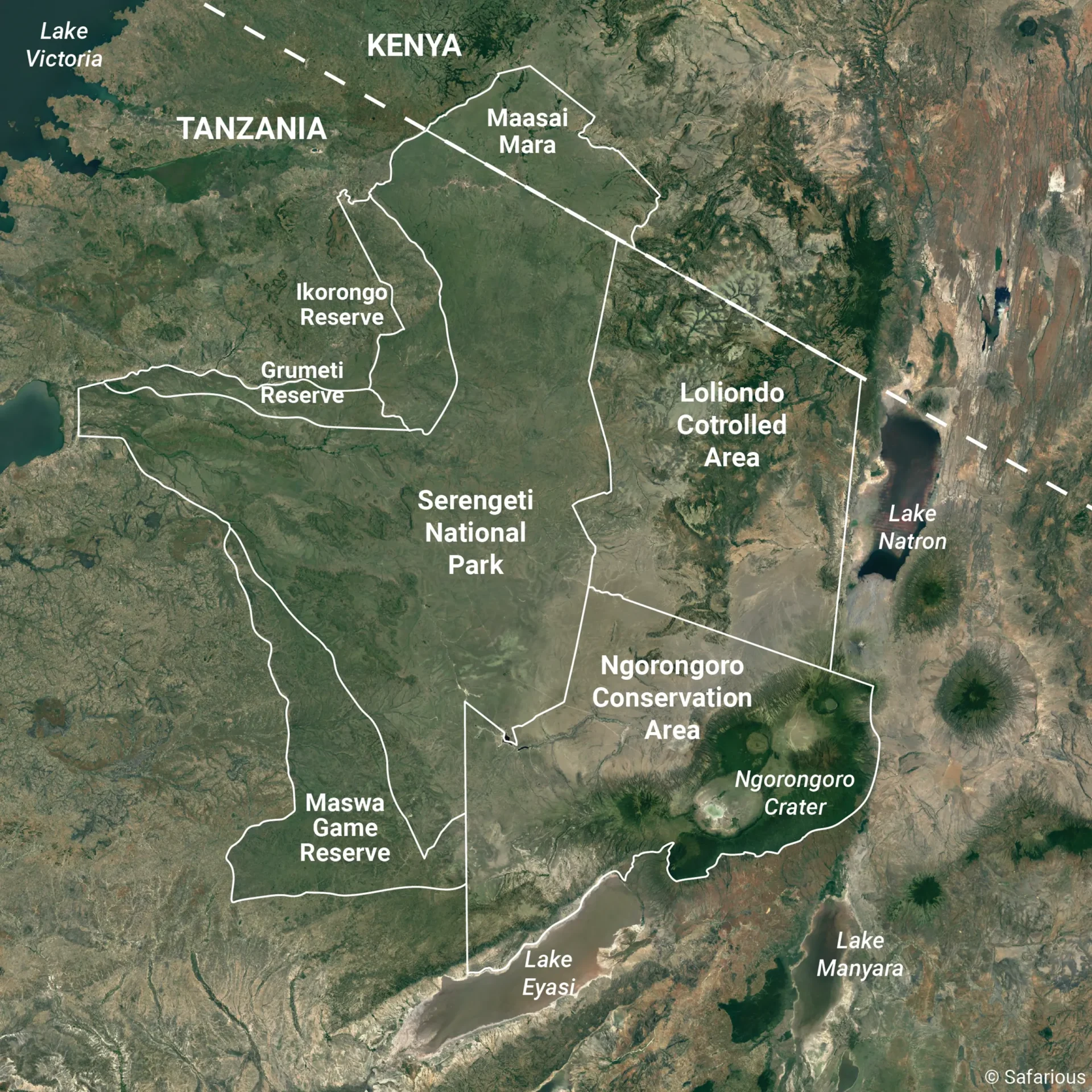
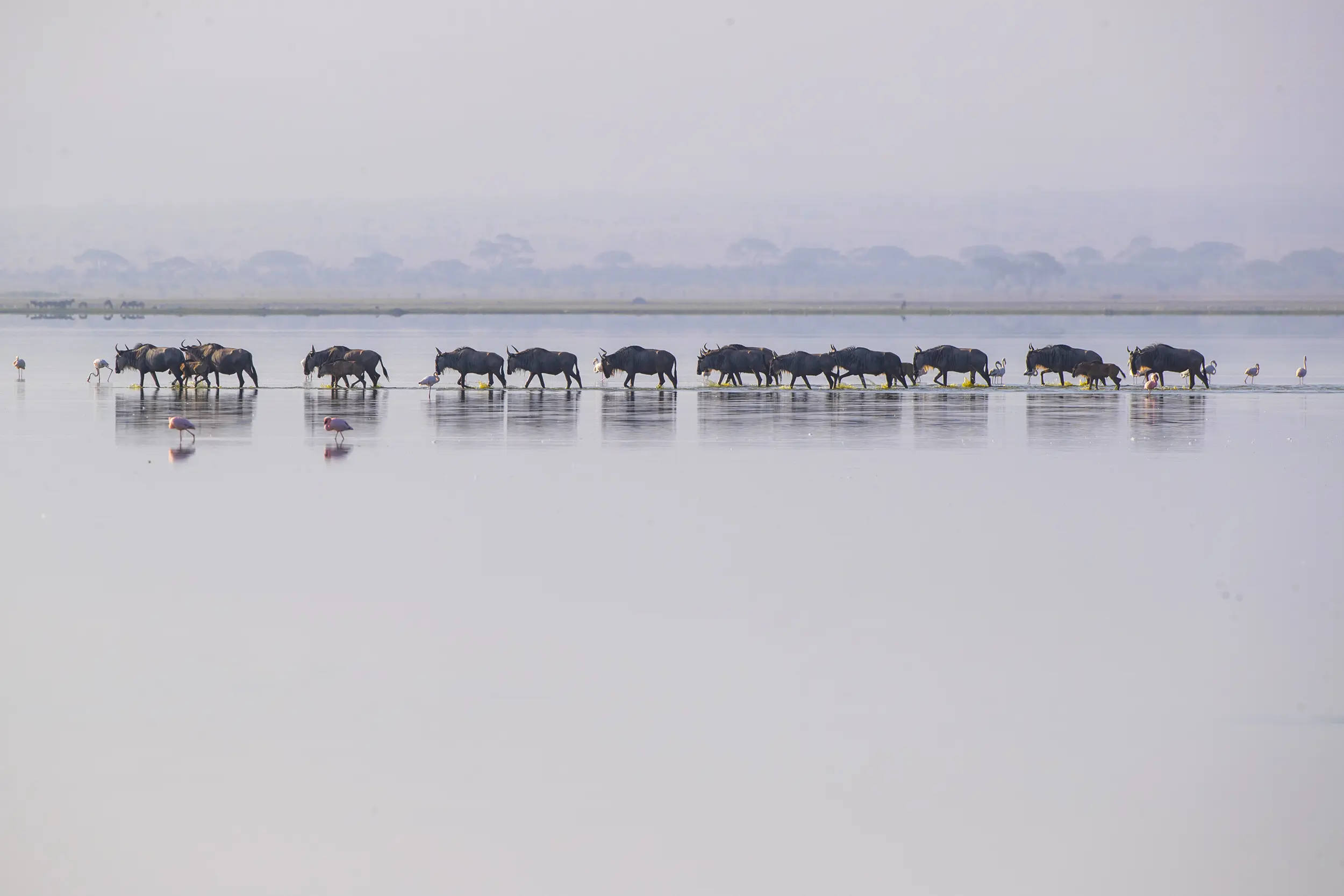
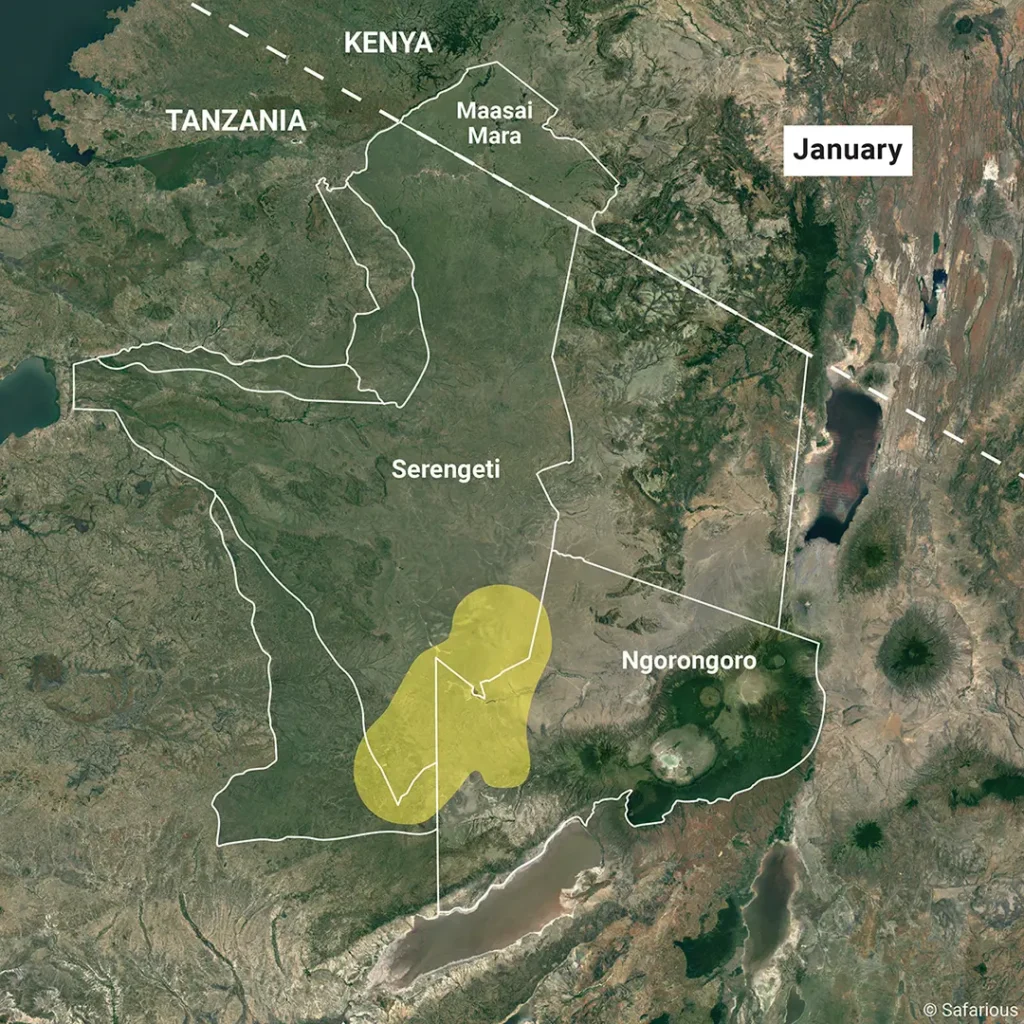
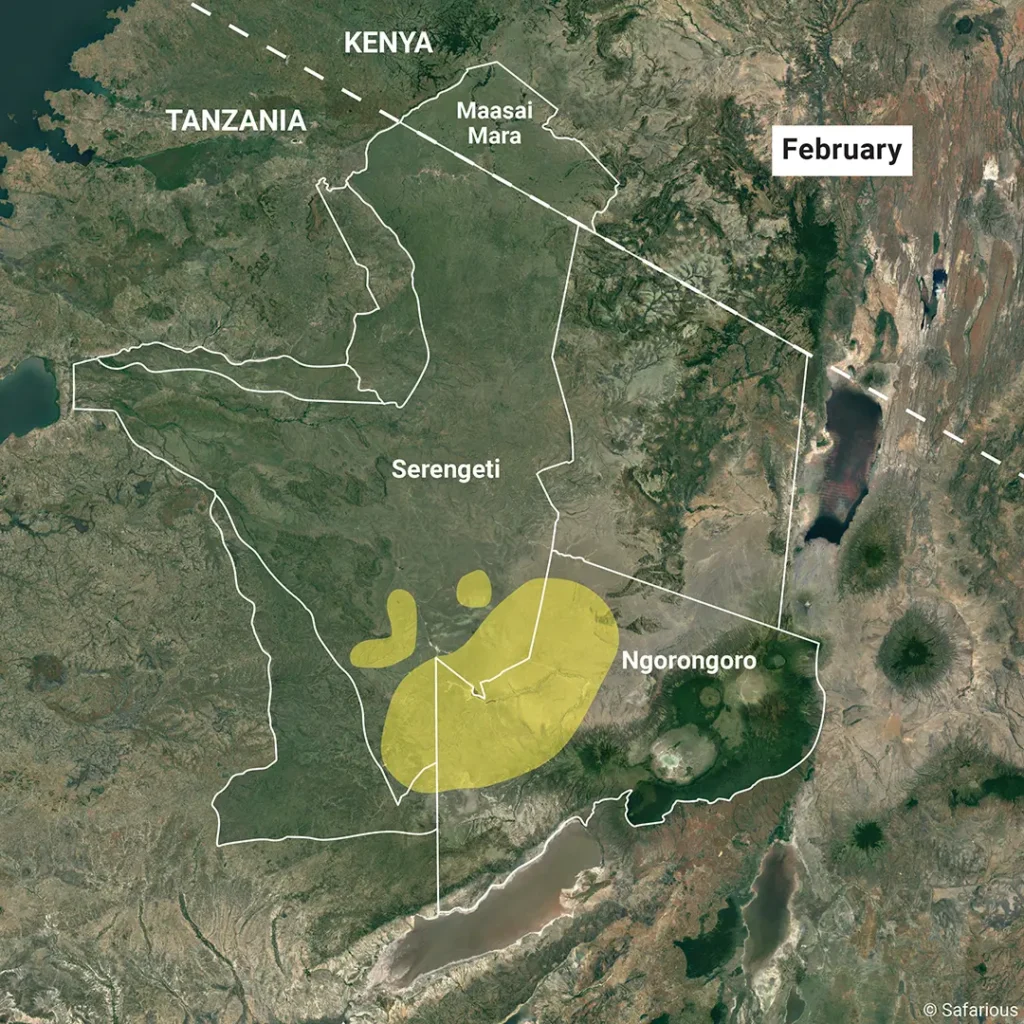
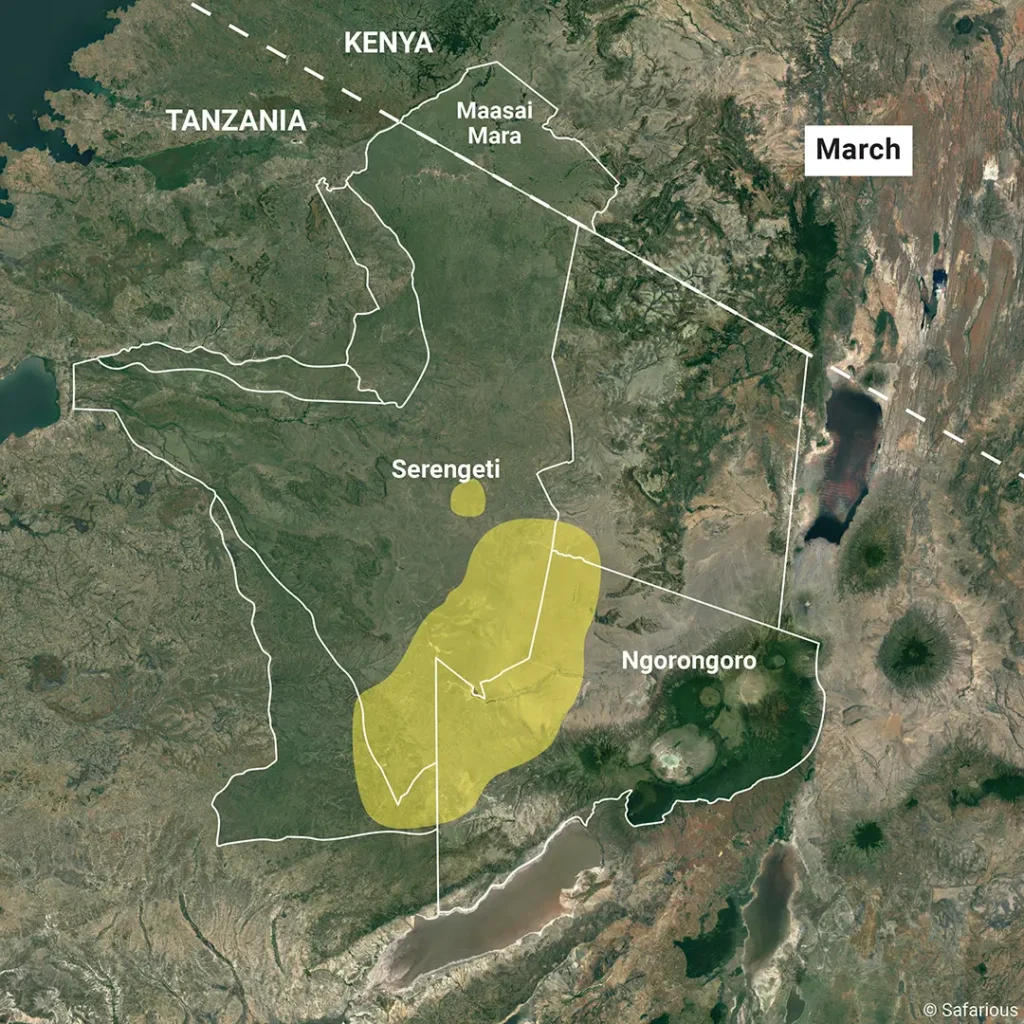
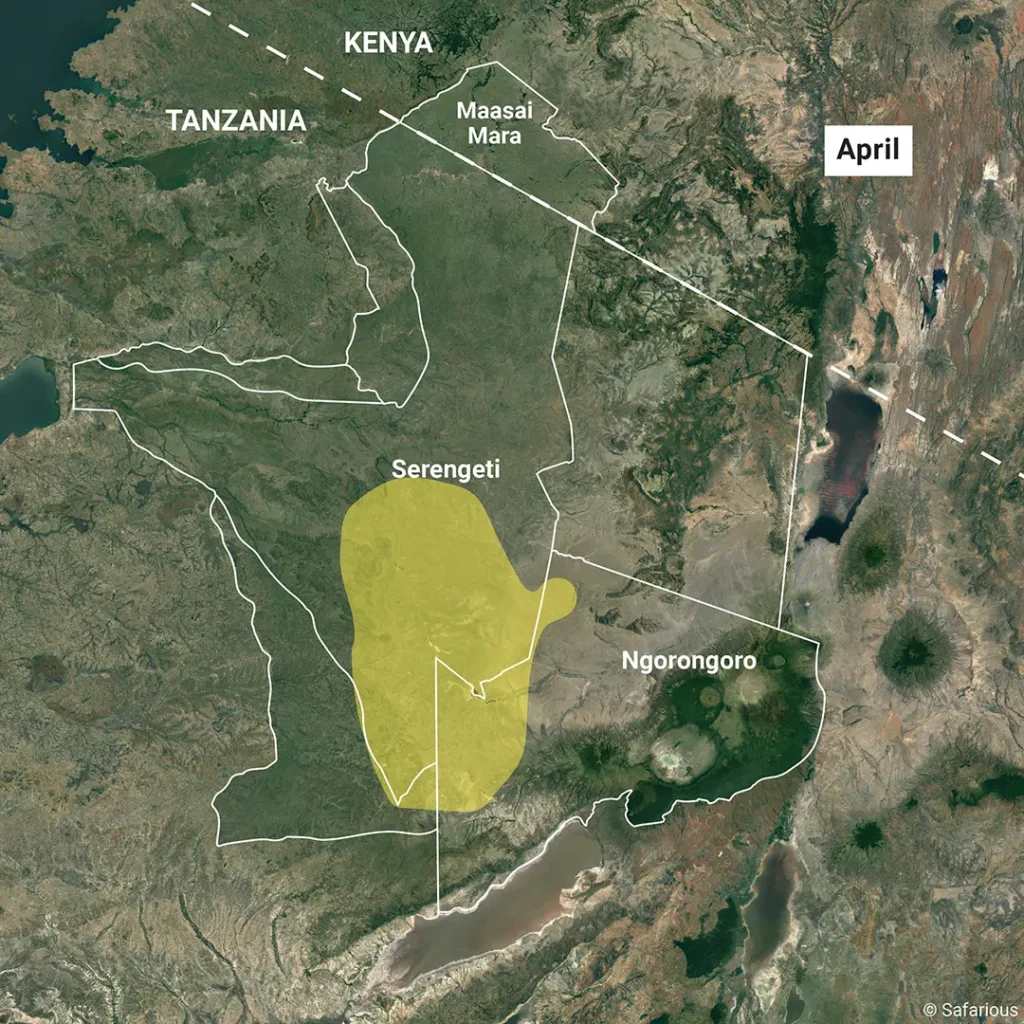
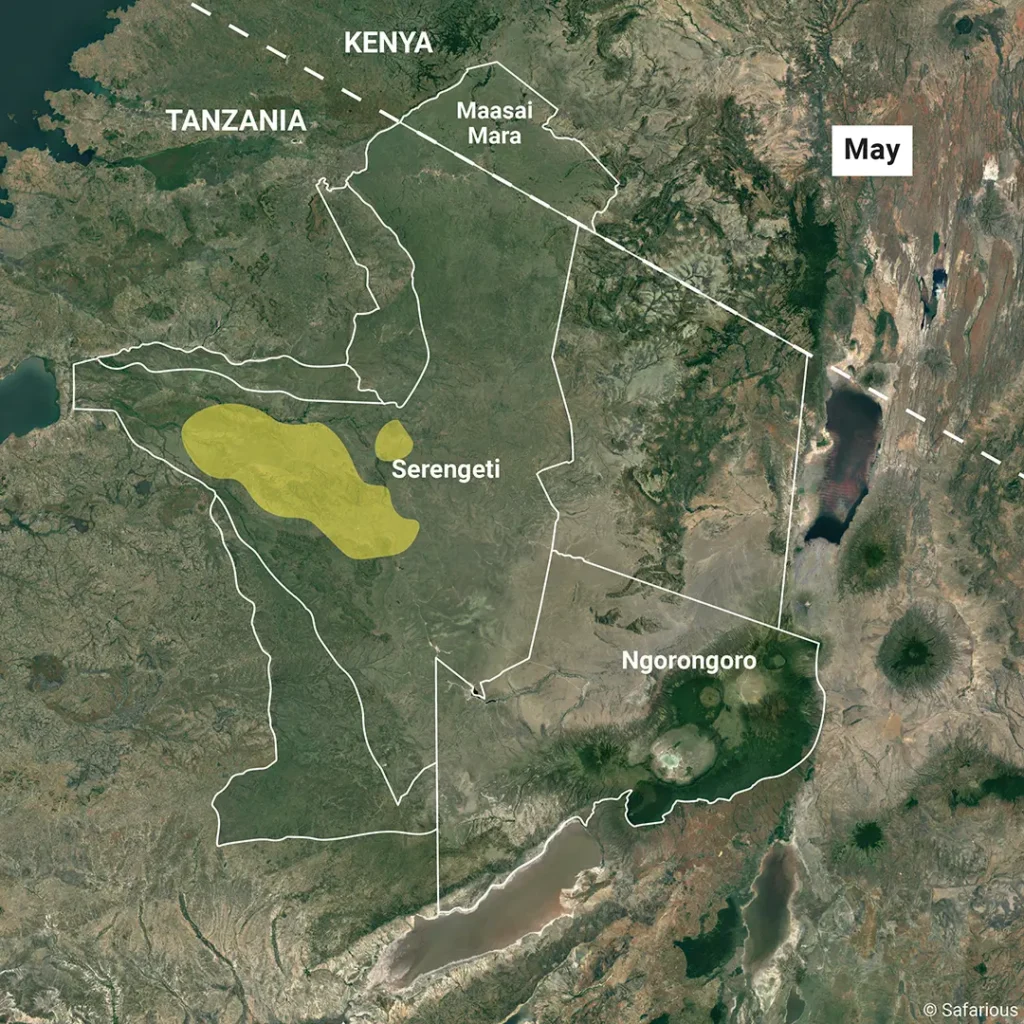
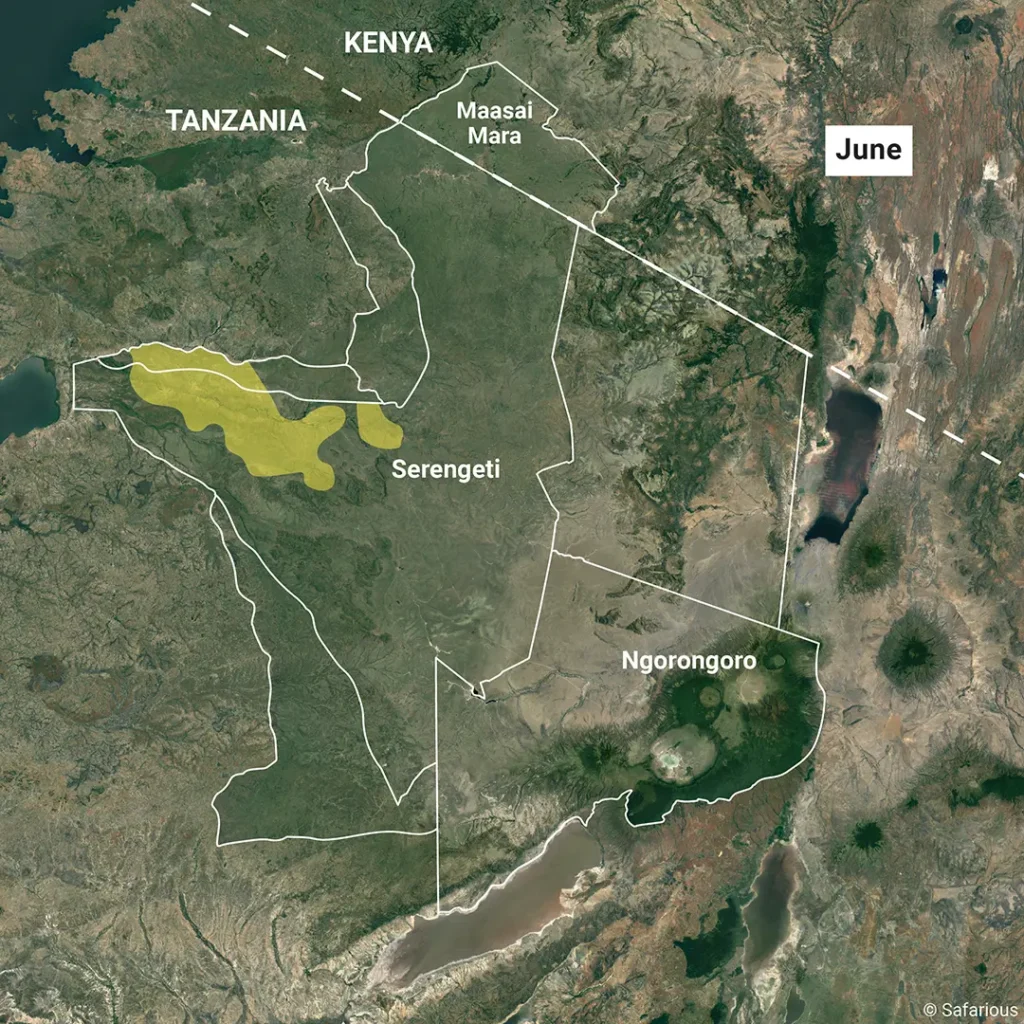
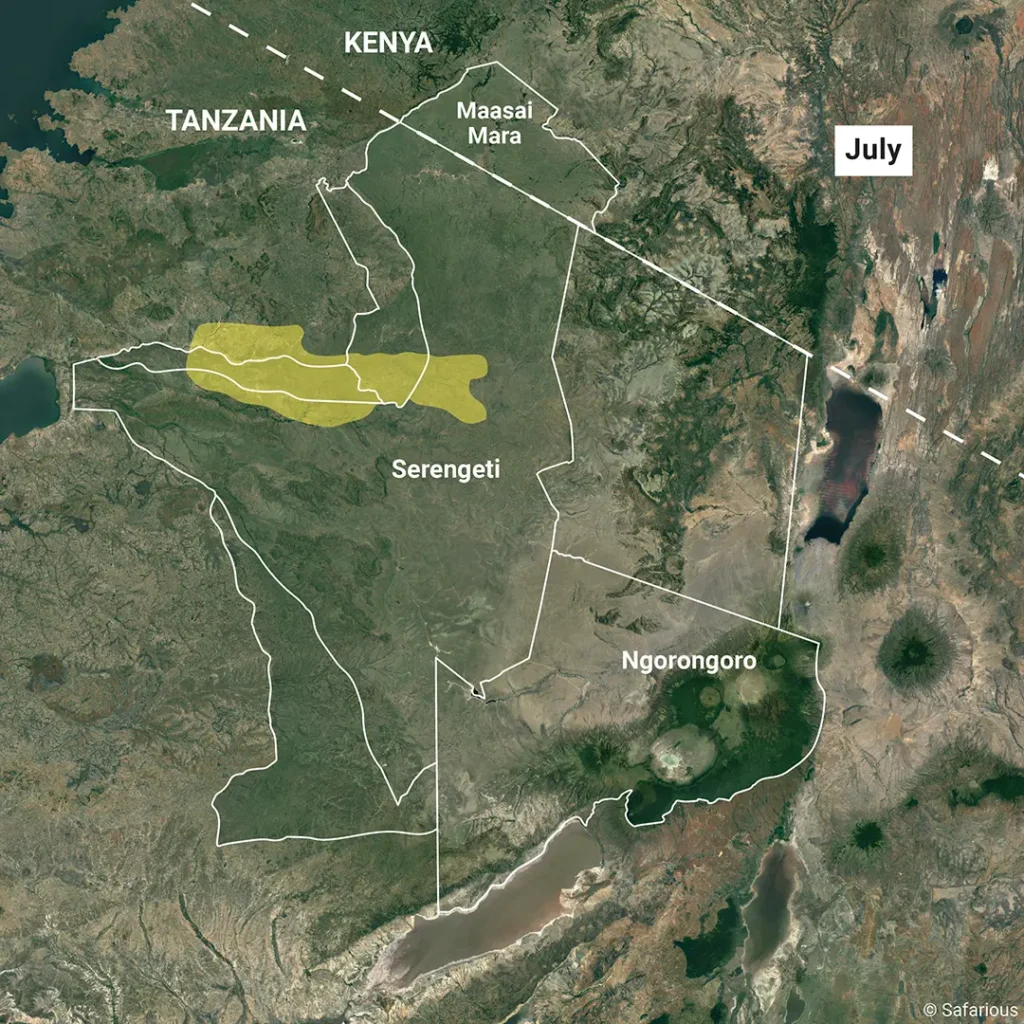
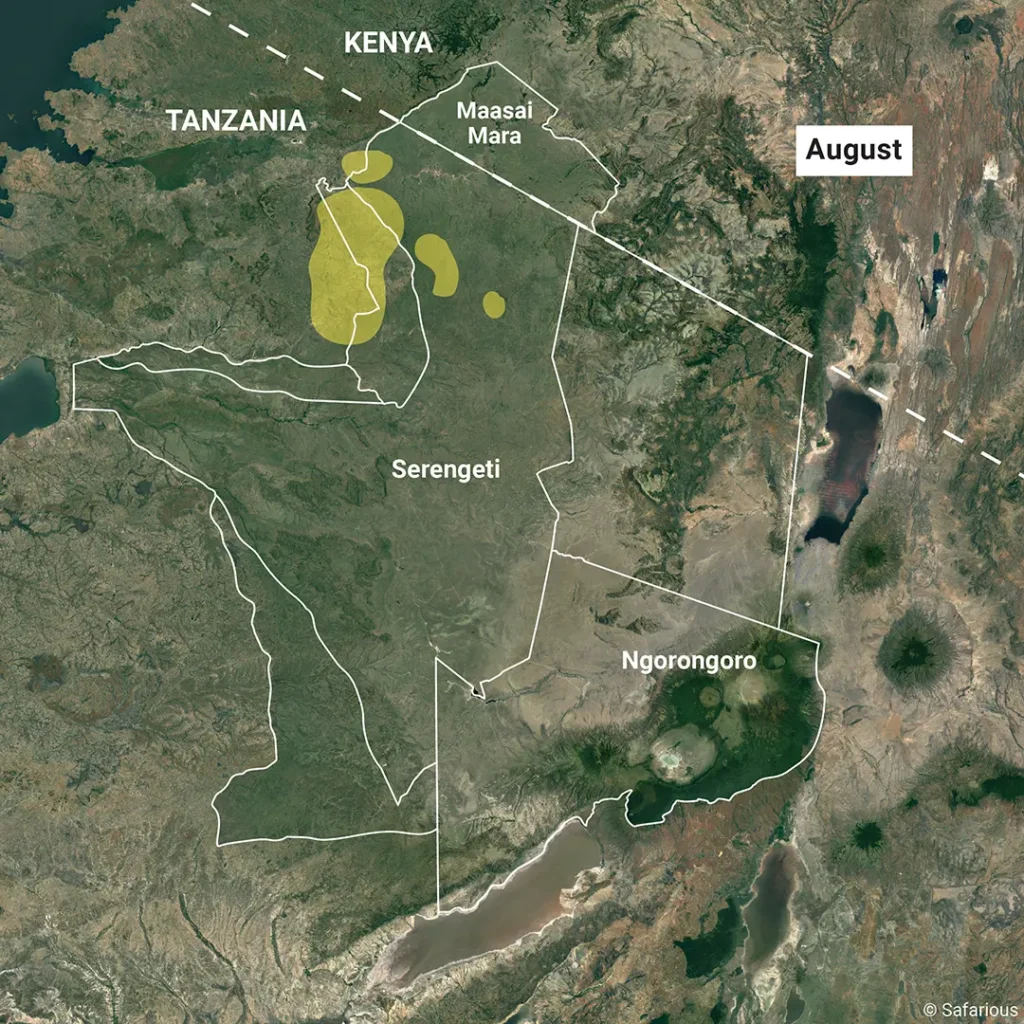
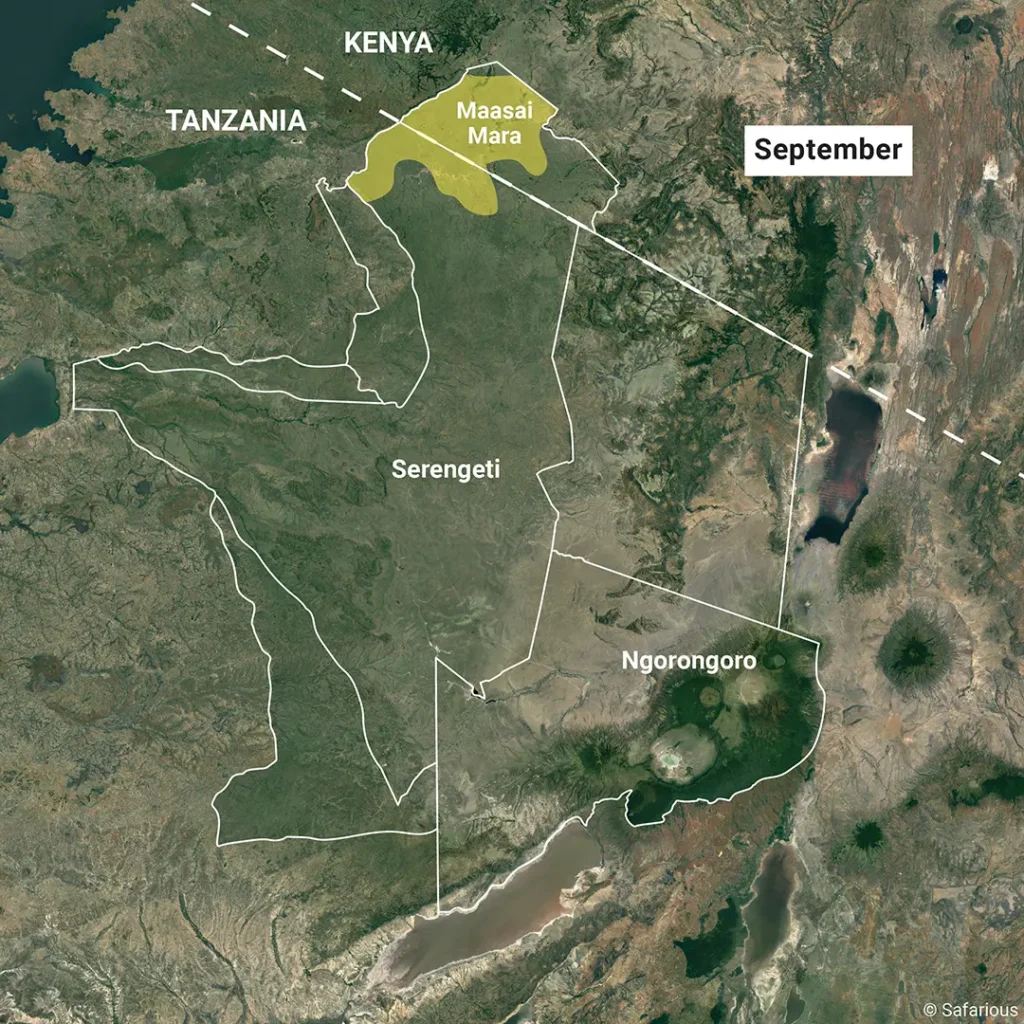
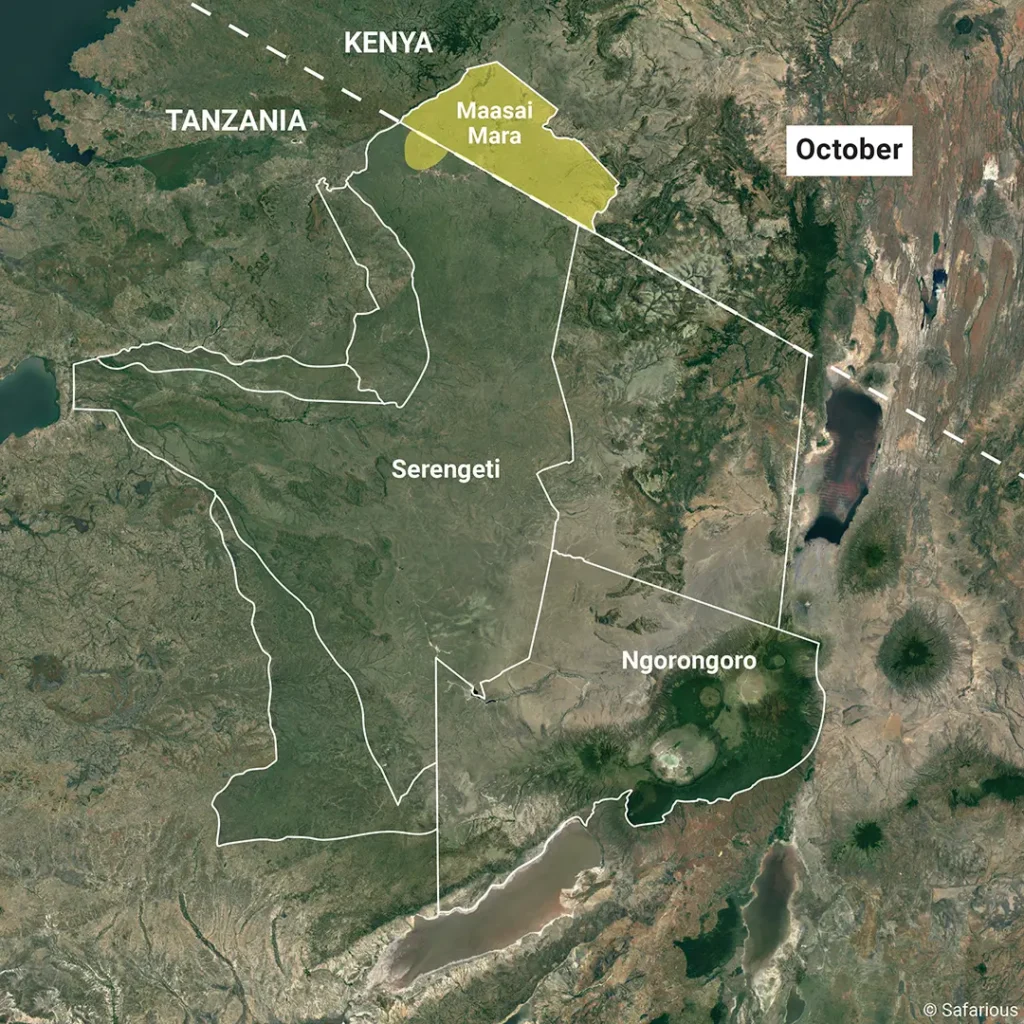
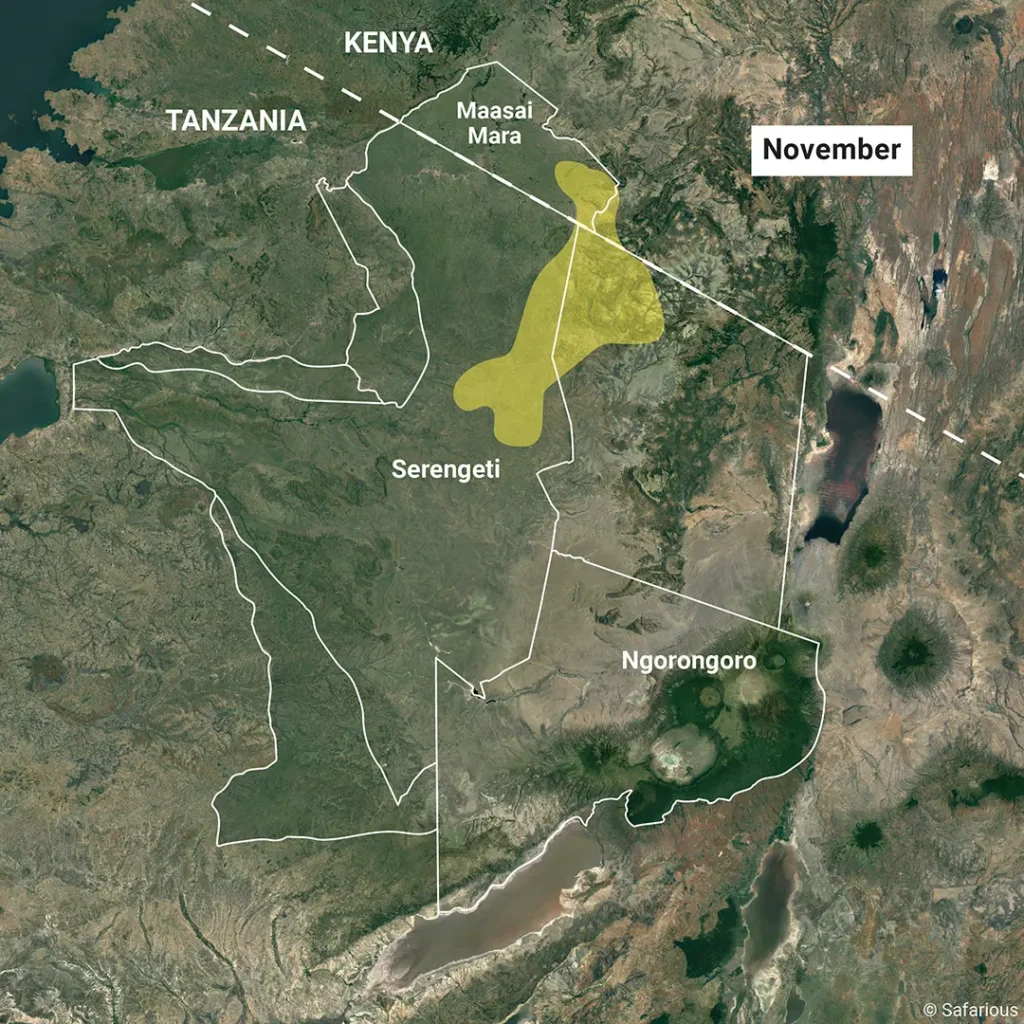
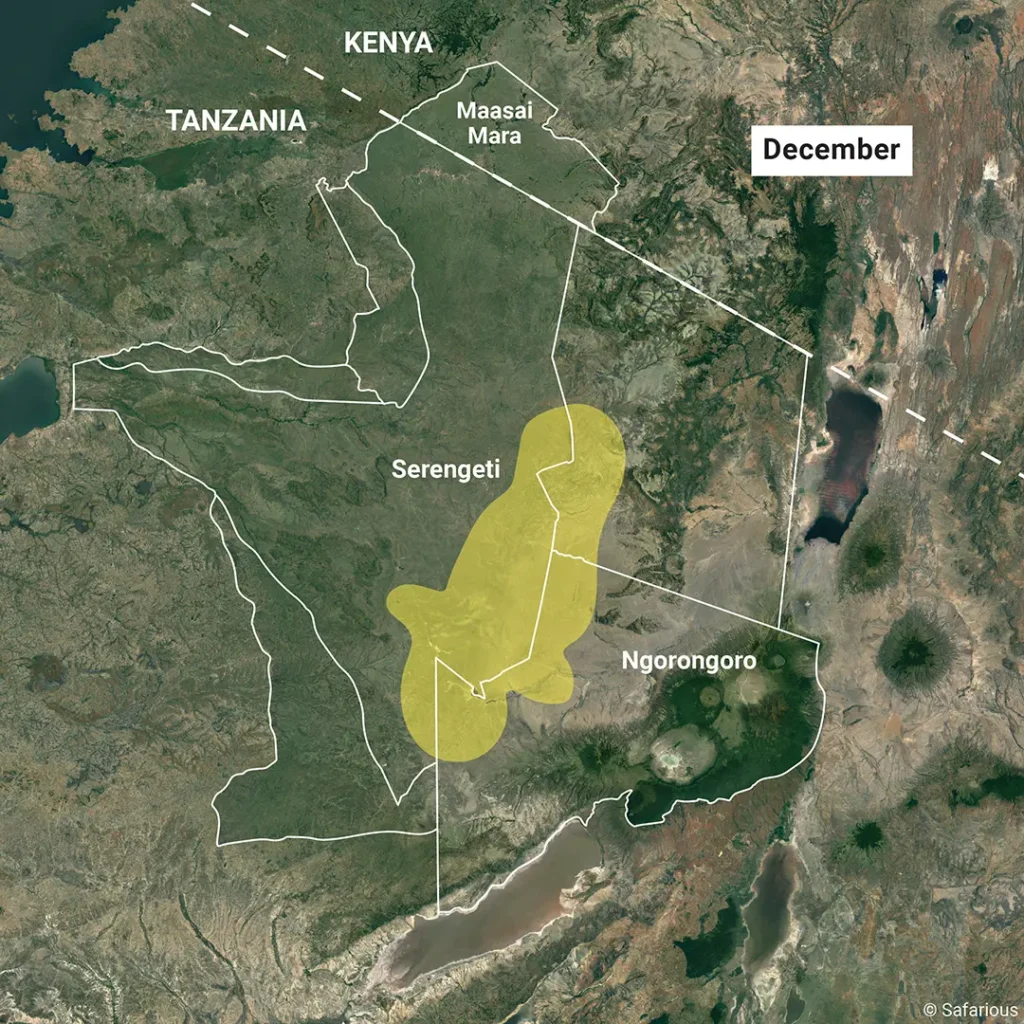
 No products in the cart.
No products in the cart.